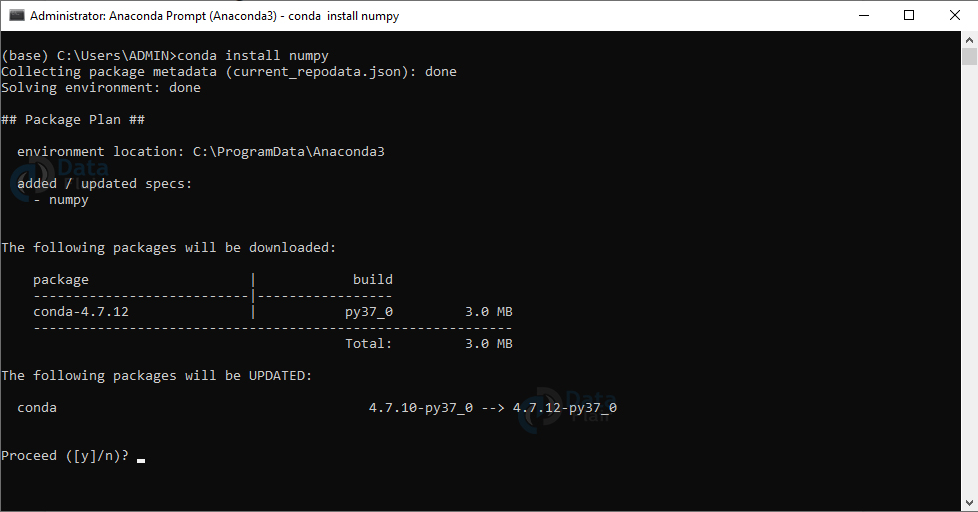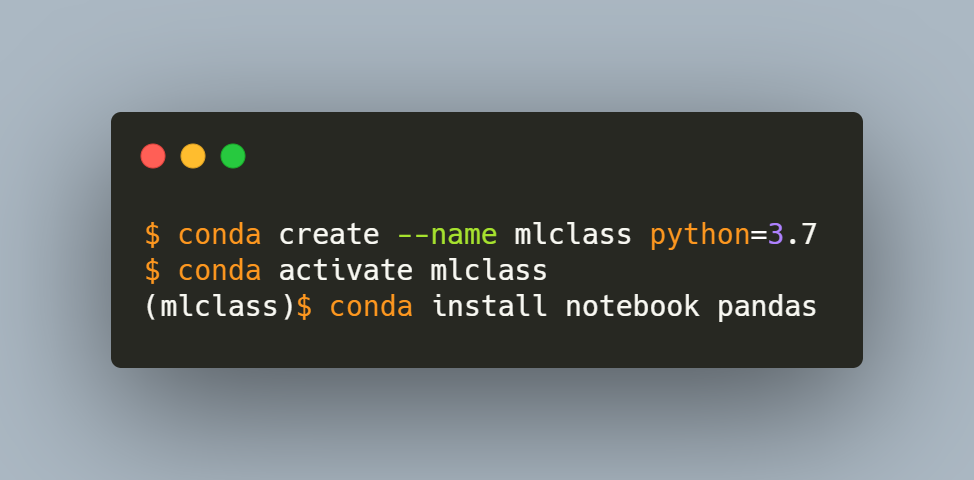

- #How to install xgboost for anaconda python on mac how to#
- #How to install xgboost for anaconda python on mac upgrade#
- #How to install xgboost for anaconda python on mac software#
- #How to install xgboost for anaconda python on mac download#
- #How to install xgboost for anaconda python on mac windows#
Step1: First, build the shared library from the C codes (libxgboost.so).
#How to install xgboost for anaconda python on mac how to#
#How to install xgboost for anaconda python on mac software#
Now you have a working model saved for later use, and ready for more prediction.īio: Ieva Zarina is a Software Developer at Nordigen. Perfect! Now save the model for later use:

Now you get a nice list with predicted classes:ĭetermine the precisionof this prediction: For each line you need to select that column where the probability is the highest:

Here each column represents class number 0, 1, or 2. Use the model to predict classes for the test set:īut the predictions look something like this: You can see that each tree is no deeper than 3 levels as set in the params.

To see how the model looks you can also dump it in human readable form:Īnd it looks something like this (f0, f1, f2 are features): Generally try with eta 0.1, 0.2, 0.3, max_depth in range of 2 to 10 and num_round around few hundred. You can look at this Kaggle script how to search for the best ones. The result can be really low with one set of params and really good with others. Now for the Xgboost to work you need to set the parameters:ĭifferent datasets perform better with different parameters. If you want to use svmlight for less memory consumption, first dumpthe numpy array into svmlight format and then just pass the filename to DMatrix: Xgboost can work with numpy arrays directly, load data from svmlignt files and other formats. Next you need to create the Xgboost specific DMatrixdata format from the numpy array. Then you split the data into train and test sets with 80-20% split: Here I will use the Iris dataset to show a simple example of how to use Xgboost.įirst you load the dataset from sklearn, where X will be the data, y – the class labels: Now test if everything is has gone well – type python in the terminal and try to import xgboost: This command installs the latest xgboost version, but if you want to use a previous one, just specify it with:
#How to install xgboost for anaconda python on mac upgrade#
I upgrade my python virtual environment to have no trouble with python versions:Īnd finally I can install xgboost with pip (keep fingers crossed): Now, a very important step: install xgboost Python Package dependencies beforehand. It is important to install it using Anaconda (in Anaconda’s directory), so that pip installs other libs there as well:
#How to install xgboost for anaconda python on mac download#
You can download the installer for Windows, but if you want to install it on a Linux server, you can just copy-paste this into the terminal:Īfter this, use conda to install pip which you will need for installing xgboost. It simply installs all the libs and helps to install new ones. The best way I have found is to use Anaconda. In order to work with the data, I need to install various scientific libraries for python. Here I will be using multiclass prediction with the iris dataset from scikit-learn. I had the opportunity to start using xgboost machine learning algorithm, it is fast and shows good results. Sahan Jayasumana Sahan Jayasumana Not the answer you're looking for? Browse other questions tagged pythonmacosinstallxgboost or ask your own question.īy Ieva Zarina, Software Developer, Nordigen. If you plan to use Dask for parallel training, make sure to install dask and dask_ml.
#How to install xgboost for anaconda python on mac windows#
Installing module with hyphenated title (self.Python) submitted 10 months ago by sputknick I'm trying to install XGBoost through Anaconda on a Windows machine.The Anaconda parcel provides a static installation of Anaconda, based on Python 2.7, that can be used with Python and PySpark jobs on the cluster. If you have a CDH cluster, you can install the Anaconda parcel using Cloudera Manager.When running it with the -v option to get the verbose output the error looks like this: I am trying to install xgboost on my Mac for Python 3.4 but I'm getting the following error after 'pip3 setup.py install':


 0 kommentar(er)
0 kommentar(er)
